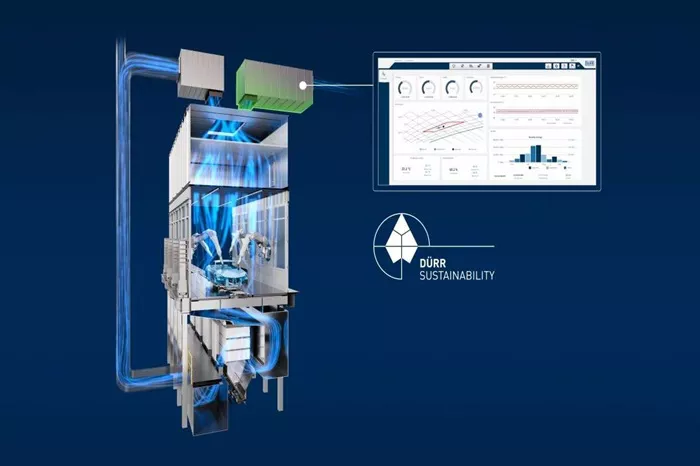Dürr has launched its new Advanced Analytics Smart AC software module, designed to improve the flexibility and efficiency of temperature and humidity control in supply air systems. This development significantly reduces energy consumption, especially in automotive paint shops, where air conditioning is a major energy user. For example, a supply air system with a 350,000 m³/h capacity equipped with the DXQ software can cut annual energy costs by around 30,000 euros, regardless of the local climate.
Supply air systems are essential in automotive paint booths, as they regulate temperature and humidity for high-quality surface coatings, while also ensuring a comfortable work environment and proper storage conditions for paint. However, air conditioning is typically energy-intensive, as it continuously adjusts the outside air. “Until now, air conditioning has accounted for about one-third of a paint shop’s total energy consumption. To tackle this, Dürr has upgraded its DXQequipment.analytics software with an intelligent control system, enabling operators to optimize both energy and operational costs,” said Jens Häcker, Vice President of Digital Factory at Dürr.
The Smart AC module calculates an energy-efficient range for temperature and humidity based on the system’s needs and local climate. This range, displayed as a ‘control window,’ allows operators to adjust the system more effectively. A larger control window means less energy is required for heating, cooling, and water input. Traditional systems rely on fixed setpoints to maintain a safety margin, often leading to unnecessary energy use. “Our digital solution employs an optimized control strategy, allowing precise regulation within a defined range,” Häcker explained. “Rather than sticking to a fixed temperature, such as 23°C, the system can flexibly adjust between 21°C and 25°C, reducing energy consumption while ensuring consistent coating quality.”
The user-friendly interface offers real-time data, providing operators with full transparency. It displays consumption values, setpoints, trends for booth conditions, and energy comparisons between the window control method and traditional point control. For instance, a 350,000 m³/h air supply system using 80% recirculated air and needing rapid adjustments 30% of the time due to weather changes can save around 30,000 euros annually using the flexible window approach—no matter the location. Savings are even greater in warmer, more humid climates or regions with higher energy costs.
Smart AC is part of the DXQequipment.analytics software, designed by Dürr to collect, analyze, and visualize data from robots and processes. It can be integrated into both new and existing supply air systems, making them more sustainable. This innovation further underscores Dürr’s commitment to improving energy efficiency and sustainability in industrial operations.

